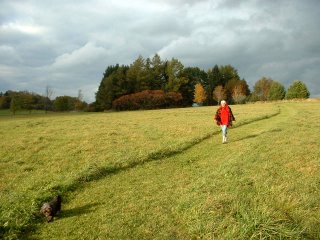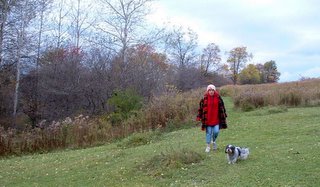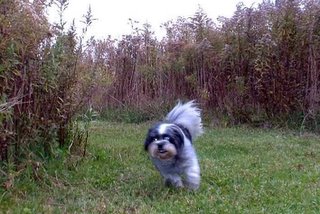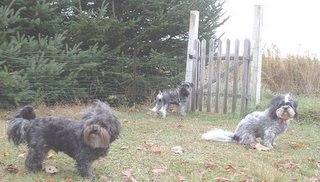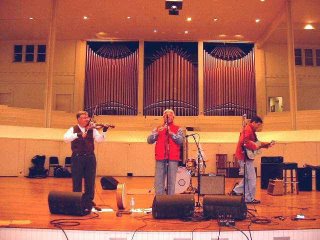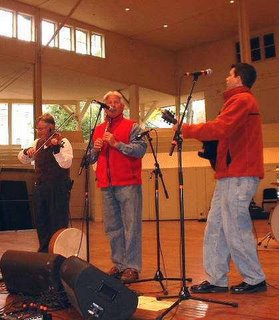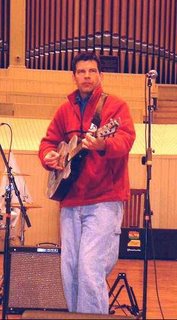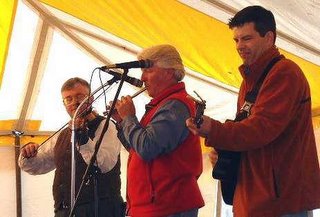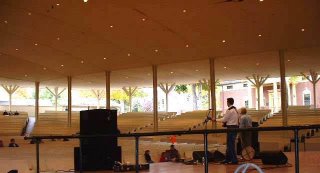As We Gather Together
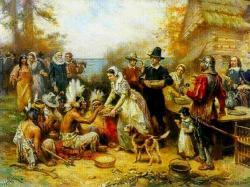
THE REAL STORY OF THANKSGIVING
by Susan Bates
Most of us associate the holiday with happy Pilgrims and Indians sitting down to a big feast. And that did happen - once.
The story began in 1614 when a band of English explorers sailed home to England with a ship full of Patuxet Indians bound for slavery. They left behind smallpox which virtually wiped out those who had escaped. By the time the Pilgrims arrived in Massachusetts Bay they found only one living Patuxet Indian, a man named Squanto who had survived slavery in England and knew their language. He taught them to grow corn and to fish, and negotiated a peace treaty between the Pilgrims and the Wampanoag Nation. At the end of their first year, the Pilgrims held a great feast honoring Squanto and the Wampanoags.
But as word spread in England about the paradise to be found in the new world, religious zealots called Puritans began arriving by the boat load. Finding no fences around the land, they considered it to be in the public domain. Joined by other British settlers, they seized land, capturing strong young Natives for slaves and killing the rest. But the Pequot Nation had not agreed to the peace treaty Squanto had negotiated and they fought back. The Pequot War was one of the bloodiest Indian wars ever fought. In 1637 near present day Groton, Connecticut, over 700 men, women and children of the Pequot Tribe had gathered for their annual Green Corn Festival which is our Thanksgiving celebration. In the predawn hours the sleeping Indians were surrounded by English and Dutch mercenaries who ordered them to come outside. Those who came out were shot or clubbed to death while the terrified women and children who huddled inside the longhouse were burned alive. The next day the governor of the Massachusetts Bay Colony declared "A Day Of Thanksgiving" because 700 unarmed men, women and children had been murdered.
Cheered by their "victory", the brave colonists and their Indian allies attacked village after village. Women and children over 14 were sold into slavery while the rest were murdered. Boats loaded with a many as 500 slaves regularly left the ports of New England. Bounties were paid for Indian scalps to encourage as many deaths as possible.
Following an especially successful raid against the Pequot in what is now Stamford, Connecticut, the churches announced a second day of "thanksgiving" to celebrate victory over the heathen savages. During the feasting, the hacked off heads of Natives were kicked through the streets like soccer balls. Even the friendly Wampanoag did not escape the madness. Their chief was beheaded, and his head impaled on a pole in Plymouth, Massachusetts -- where it remained on display for 24 years.
The killings became more and more frenzied, with days of thanksgiving feasts being held after each successful massacre. George Washington finally suggested that only one day of Thanksgiving per year be set aside instead of celebrating each and every massacre. Later Abraham Lincoln decreed Thanksgiving Day to be a legal national holiday during the Civil War -- on the same day he ordered troops to march against the starving Sioux in Minnesota.
This story doesn't have quite the same fuzzy feelings associated with it as the one where the Indians and Pilgrims are all sitting down together at the big feast. But we need to learn our true history so it won't ever be repeated. Next Thanksgiving, when you gather with your loved ones to Thank God for all your blessings, think about those people who only wanted to live their lives and raise their families. They, also took time out to say "thank you" to Creator for all their blessings.
It is sad to think that this happened, but it is important to understand all of the story and not just the happy part. Today the town of Plymouth Rock has a Thanksgiving ceremony each year in remembrance of the first Thanksgiving. There are still Wampanoag people living in Massachusetts. In 1970, they asked one of them to speak at the ceremony to mark the 350th anniversary of the Pilgrim's arrival. Here is part of what was said:
"Today is a time of celebrating for you -- a time of looking back to the first days of white people in America. But it is not a time of celebrating for me. It is with a heavy heart that I look back upon what happened to my People. When the Pilgrims arrived, we, the Wampanoags, welcomed them with open arms, little knowing that it was the beginning of the end. That before 50 years were to pass, the Wampanoag would no longer be a tribe. That we and other Indians living near the settlers would be killed by their guns or dead from diseases that we caught from them. Let us always remember, the Indian is and was just as human as the white people.
Although our way of life is almost gone, we, the Wampanoags, still walk the lands of Massachusetts. What has happened cannot be changed. But today we work toward a better America, a more Indian America where people and nature once again are important."
